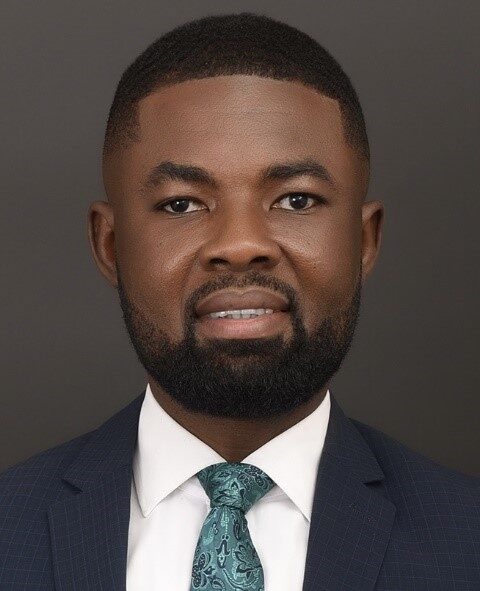The old banking supremacy of the medieval Italian houses of Peruzzi and Medici of Florence first passed to Antwerp in Flanders. English, German, and Dutch bankers rose to prominence after the latter collapsed in a political and economic catastrophe in the sixteenth century. As a matter of fact, the Bank of Amsterdam and the Bank of England, founded in 1609 and 1694, respectively, have gone on to become international economic forces in the modern world[1]. The perils that supplanted the Peruzzi with the Medici, such as credit concentration and speculation, as evidenced in their bad wager on England’s King Edward III, are still rife in modern banking. The economic recessions and bankruptcies that crushed the financiers of Antwerp continue to plague modern economies and corporations. These perils, commonly called risks, are either specific to a corporation or faced by all players in the market. Finding the right balance in risk taking is key for the survival of corporations and banks, in particular for the promotion of national, regional, and global economic stability. So, whether it is Silicon Valley Bank (US), Capital Bank (Ghana), Skye Bank (Nigeria), Satyam (India), Lehman Brothers (US), Northern Rock (UK), China Aviation Oil (Singapore), National Australia Bank (Australia), Stockholm Banco (Sweden), or the House of Peruzzi, one thing is clear: The causative factors of failures and near failures of corporations as well as mitigants (proper management of risk) are not entirely new to stakeholders—promoters, management, regulators, investors, etc. Hence, institutions and practitioners alike must be adequately equipped to manage the identified risk factors.
Enterprise Risk Management
Risk taking is essential in every business endeavor. Hence, safety measures must be implemented by institutions and those charged with such responsibility to reduce potential catastrophes[2]. In managing risk, knowledge, policy direction, and measurement techniques are necessary for risk acceptance or avoidance to enable informed decision-making. As a result of the increasing complexity of managing systemic and idiosyncratic risks posed by today’s highly interconnected economies and financial markets, enterprise risk management (ERM) has become widely accepted as an indispensable tool for corporations and, in particular, financial institutions. As defined by the Committee of Sponsoring Organizations of the Treadway Commission (COSO), “Enterprise risk management is a process, effected by an entity’s board of directors, management, and other personnel, applied in strategy setting and across the enterprise, designed to identify potential events that may affect the entity, manage risks to be within its risk appetite, and provide reasonable assurance regarding the achievement of entity objectives.”[3] The ERM toolkit and risk management best practices, when deployed effectively and efficiently, can help forestall corporate and bank failures and limit localized contagion and cross-boundary spillover effects. However, like any other toolkit, in the hands of the regulator or the regulated, it must be commandeered by knowledgeable and trained personnel. Anything short of this is akin to throwing pearls before a swine. Therefore, talent must be nurtured and institutional and personnel capacity developed for the efficient delivery of risk management.
Talent Development and Capacity Building in the Global Space
As noted by McKinsey & Company, the changing risk landscape suggests that new capabilities and expanded knowledge in risk management, data, analytics, and technology are required of managers of risk for corporations to effectively meet the challenges of the future[4]. Such capacity building requires talent, credible learning institutions, and leading authorities in the domain of risk management. Notably, institutions of higher learning in various jurisdictions have designed curricula and committed resources to develop a global pool of talent for present and future needs. Practitioners of the risk profession, aggregating in groups such as the Global Association of Risk Professionals (GARP), the Professional Risk Manager’s International Association (PRMIA), and the Risk Management Association of Nigeria (RIMAN), now the Chartered Risk Management Institute of Nigeria, are also strong advocates for talent development and capacity building at the international and West African sub-regions, respectively. These member-driven non-profit organizations have set the standard of practice for the global risk profession and also created training platforms. These organizations administer periodic certification exams for candidates who aspire to roles in the risk profession. Regional groupings of certified risk professionals called chapters are encouraged and supported by these organizations to sustain and promote the risk profession globally and locally. A very important development in the global push for risk talent development is the exploitation of synergy between the aforementioned global risk professional bodies and academia. For instance, GARP and PRMIA acknowledge the prior studies of candidates from accredited institutions and therefore grant exemptions for some certification exams. Such synergy is a driver of risk profession uptake or studies by new talents.
Building Local Capacity and Institutions
The University of Ghana Business School and the University of Professional Studies, Accra, have equally responded well to risk talent development and curated graduate programs for the risk profession in Ghana. The Presbyterian University of Ghana has also added to this unique pool. More so, undergraduate actuarial programs such as those of the University of Cape Coast and KNUST remain steady talent pipelines for individuals to pursue careers in risk management. By their legislative mandates, the Chartered Institute of Banking (CIB) and the National Banking College (NBC), through their training programs targeted at banking professionals in particular, continue to contribute to local talent development and capacity building. The academia in Ghana has responded with the standard of knowledge and skills required of persons seeking to practice risk management.
However, a recognized organization vested with the power to teach and regulate the practice of risk management is nonexistent in the country. This institutional vacuum is a considerable drawback to the efforts of the aforementioned institutions in attracting and developing a national talent pool for the risk profession. It is long past due that a member-driven organization be established to advance the field, regulate its members, establish ethical conduct, and establish standards in line with worldwide best practices for efficient risk management and corporate governance. Such organization will be a repository of knowledge, coordinate capacity building, drive synergy between practitioners and academia, provide advocacy, and provide a consultative platform for policy direction. Ghana will certainly benefit from having knowledgeable individuals and institution(s) which will advance the country’s collective study and practice of risk management for a changing risk landscape.
REFERENCES
- M. Roberts, Modern History (2007), Duncan Baird Publishers (London)
- Dei Ofosu-Hene, Eric, and Peter Amoh (2016) Risk Management and Performance of listed Banks in Ghana. European Journal of Business Science and Technology 2:107–21
- McKinsey & Company, What is Business Risk (see https://www.mckinsey.com/featured-insights/mckinsey-explainers/what-is-business-risk)
- https://www.garp.org/
- https://www.prmia.org/
- http://ugbs.ug.edu.gh/msc-financial-risk-management
- https://admissions.upsa.edu.gh/admissions/postgraduate/msc-insurance-risk-management/
- https://www.coso.org/guidance-erm
[1]J.M. Roberts, Modern History (2007),
[2] Dei Ofosu-Hene, Eric, and Peter Amoh (2016)
[3] COSO (2004)
[4] McKinsey & Company (2023)










